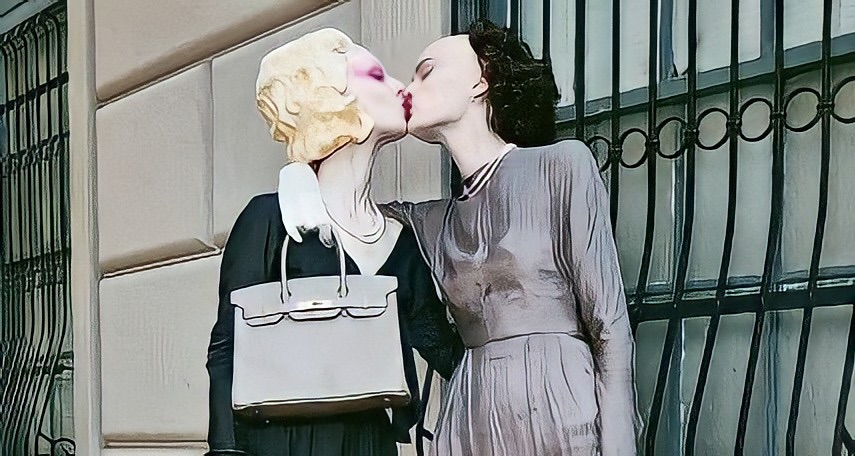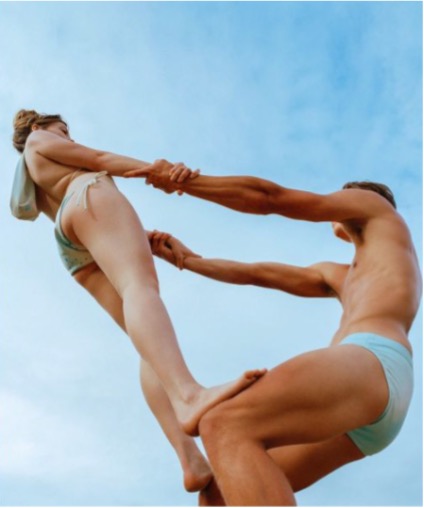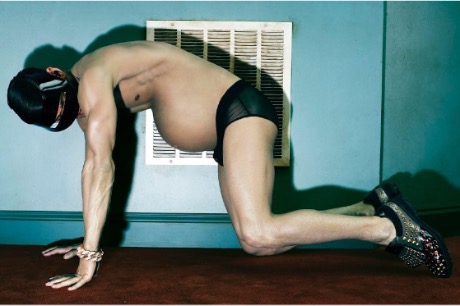Equinox and Sotheby’s partner for Forms of Intimacy: A Photography Auction to Benefit LGBTQIA+ Youth
Words by Shai Baitel, Artistic Director, June 2022.

Intimacy has always been an amorphous yet crucial component of human existence. The mention of the word intimacy evokes, for many, a euphemistic association with sex. This is, of course, an aspect of human intimacy, but its full scope goes well beyond physical pleasure.
Intimacy can be emotional, particularly when it involves candid, authentic sharing of thoughts and feelings. It is associated with vulnerability, where closeness opens a space for being able to express your most complicated emotions.

Private/Public by Steven Klein
Intimacy can be experiential, based on shared experiences and companionship, and it can be intellectual through cross-pollination of thoughts and ideas. But above all, intimacy is a feeling that your vision of yourself—your very essence—can be perceived, understood, and grasped by someone else.
Indeed, intimacy can take many forms, all of which are fundamental to human existence. Yet, for LGBTQ+ people, intimacy has long been scrutinized, policed, or regulated. Aberrant expressions of intimacy—those that don’t conform to a heteronormative standard—have often been perceived as a threat to societal norms.
Thus, queer people have had to learn, to traumatic effect, to suppress or hide their instinctual need for intimacy.

On being single / Kiss, Me vs Others by Laurence Philomene: “Gaining an interest in image-making in their teenage years, I have since used photography as space to both experiment with, and document identity as it comes to be expressed through gender. Using photography as a process of mutual [and self] care, my work aims to humanize identities that have been historically marginalized, and act as a love letter to my community.”
This is not to say that queer intimacy has ever truly been regulated and suppressed. LGBTQ+ people have always created spaces for themselves to express and engage with their true essences. Historically, these people sought out discretion and invisibility in the face of hostile attitudes.
But the advent of photography allowed queer people to bring these emerging technologies into their spaces and document their lives and intimacies, at once materially confirming their existence and offering a physical reminder of their lives for posterity. In the Victorian era, for example, queer people often used photos to allude to hidden intimacy, almost always for private use or collections.
In the twentieth century, photography emerged as a vital tool for queer people to provide intimate insights and visibility to their lives, struggles, and aspirations.
Photography humanized queer people and pushed others to understand their plight. To expose oneself through photography—to step outside of the closet—was a brave and powerful gesture. It allowed the LGBTQ+ community to self-actualize and display its many forms of intimacy to the world.
For decades, queer people have fought to be accepted and understood as they are—without compromising or giving in to societal pressure to conform or hide. As society has experienced a paradigm shift toward sexuality and gender, queer people have achieved incredible gains towards acceptance and widespread visibility.

Micos by Rob Woodcox: “With love and attention to each individual, a community can thrive. Celebrating each other is a daily responsibility. Though the path ahead may seem twisted, every step forward offers a new perspective and opportunity for growth and change. Keep moving onward.”
Yet, there remains much work to do. Prejudice and violence against LGBTQ+ people are widespread, which is why it is still very important to include and support the various voices included in this exhibit.
Over the past decade there has been a proliferation of young and emerging photographers seeking to reconceptualize sexuality, representation, and self-expression. Many of these artists follow in the footsteps of pathbreaking photographers and artists who created and defined the very genre of queer photography.
Taken as a whole, this selection of photography and artistic voices for Forms of Intimacy brings visibility and esteem to queer people across the spectrum of sexuality and gender, through brave, vulnerable, and, above all, intimate gestures.

Holding the Sky by Emmie America: “Holding the Sky is a perfect illustration to the thought that has ruled my mind in the past months – each other is all we’ve got.”

Red Creek by Ryan McGinley
The versions and intentions of intimacies depicted in their work are wide-ranging. Clifford Prince King sees his photography as a way to validate “LGBTQ+ folks as pioneers and cultural shifters” as his images seek to normalize their existence in society.
Heather Glazzard’s images of trans and gender non-conforming people give a gentle, poetic visibility, through almost formal portraiture, to widely misrepresented and underrepresented groups.
Laurence Philomene’s autobiographical work allows them “to dig deeper into what it means to reclaim autonomy over our stories as marginalized individuals.” And Emmie America’s images speak resistance queer people will always put up against governmental or societal oppression.
Overall, Forms of Intimacy is an initiative that highlights work, efforts, and lives that are committed to pushing boundaries, ways of being perceived in the world, and their fundamental potential through brave gestures that display, with boundness pride, the many ways of expressing queer intimacy.

Pregnant Man #02 by Steven Klein
Equinox x Sotheby’s Forms of Intimacy initiative seeks to celebrate and exalt disparate LGBTQ+ photographic voices. Indeed, this distinctive and diverse project has much resonance with the ethos of the Equinox Group.
Equinox is firmly committed to supporting, engaging with, and welcoming as diverse a clientele base as possible. The Equinox brand encourages self-expression, independence, and self-improvement—values that resonate with the artistic voices highlighted in this initiative.
All are welcome to be part of Equinox, regardless of their sexuality, gender identity, or physique, as long as they are committed to maximizing their potential.

Shai Baitel
Shai Baitel is an arts executive and creative director with extensive experience in the fields of business, culture, and philanthropy. He co-founded Mana Contemporary (Jersey City, Chicago, Miami), the largest art centre of its kind and a hub for artists and collectors.
He conceived the exhibitions “Bob Dylan: Retrospectrum” in 2019 and “Zaha Hadid Architects – Close Up” in 2021. Baitel has extensive experience in arts and culture, is a prolific writer, and has contributed to major publications.
